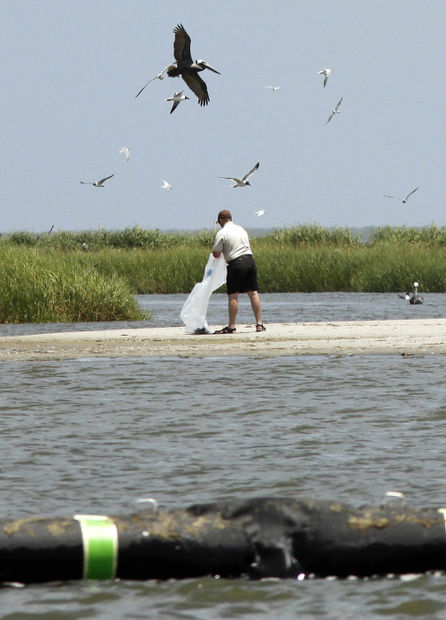
As most know, the act of carrying a caged canary into a coal mine used to be a method for the carrier to save his comrades in the event of deadly gas buildup in a dark, leaky shaft. Enlightened miners took a canary's dropping dead as a strong suggestion that prolonging their own lives depended on a quick flight to fresh air.
The first requirement of such an alarm system is to pay attention. The second is to accept that the physical world is ruled by cause and effect rather than magic. The third consists of the willingness to rationally assess a situation - hastily, if need be - and only then to act.
May is generally accepted as the month when the spring migration peaks. The return of birds, their singing and their good-natured showiness contribute a fair measure of what makes May merry.
Humans have a connection with birds that works at multiple levels, including the inspiration for flight.
The loss of birds helped spur the conservation movement when more than a century ago the numbers of egrets, herons and cranes plunged, while species including heath hens, Carolina parakeets, ivory-billed woodpeckers and passenger pigeons disappeared entirely.
Later, after World War II, eagles, falcons and hawks began to vanish, spurring another flurry of environmental action. The title of one of the 20th century's iconic books, Rachel Carson's Silent Spring, refers to a day when, as the result of indiscriminate use of chemicals, few birds, if any, would survive.
Despite sporadic efforts to save emblematic species, birds continue to die unnatural deaths. Check it out:
- During the past three winters, emaciated snowy owls have been turning up in greater numbers south of their normal winter range in North America, a Canadian government avian pathologist reports. Some were hemorrhaging, and some had a breathing condition believed caused by weakened immune systems or malnutrition. What a warming Arctic is doing to predators' prey availability counts among the suspects.
Comment: For 'warming' read climate change of the cooling persuasion.
- The latest estimate by a group of scientists of the number of bird deaths caused by the 2010 Deepwater Horizon oil spill in the Gulf of Mexico is 800,000, The New York Times reported last week.
- The federal government has acknowledged that the future of the greater sage grouse might be extinction in coming decades because of habitat loss, but so far it has done little except to form a plan that saves habitat only if individual ranchers voluntarily agree to do so. Fracking contributes to the dwindling of the habitat.
- Wind farms, recent peer-reviewed articles suggest, kill an estimated 573,000 birds and 888,000 bats annually. The number of dead birds, including threatened and endangered species, could exceed 1.4 million by 2030 without policy changes.
- The Ohio-based Black Swamp Bird Observatory is suggesting that an experimental wind farm planned for offshore on Lake Erie could have deadly consequences for migrating birds, including the endangered Kirtland's warbler and piping plover. Western Lake Erie sits on one of North America's important migratory routes.
- A solar-energy power plant in California has killed birds from at least 71 species. Light reflected from the panels and aimed at water-filled boilers generates 800-degree air temperatures, enough heat to burn feathers of birds flying overhead.
- About 20 million additional tons of plastics end up in the world's oceans each year, " increasing harm to marine wildlife," wrote a team from the UCLA Institute of the Environment and Sustainability. Among the victims are thousands of birds that swallow bits of indigestible plastic and, unable to eat because their stomachs remain full, starve to death.
- A warming planet is forcing some mountain-dwelling birds to seek higher elevations. If the trajectory remains unchanged, some of those species will run out of climbing space and will have to adapt or vanish, concluded a researcher form the Cornell Lab of Ornithology.
- A review published in The Condor: Ornithological Applications found that as many as 365 million to 988 million birds die in the United States each year by flying into windows. Low-rise buildings account for 56 percent of the deaths, and residences about 44 percent. A study published last year found that cats kill between 1.4 billion to 3.7 billion birds annually.



We humans suck